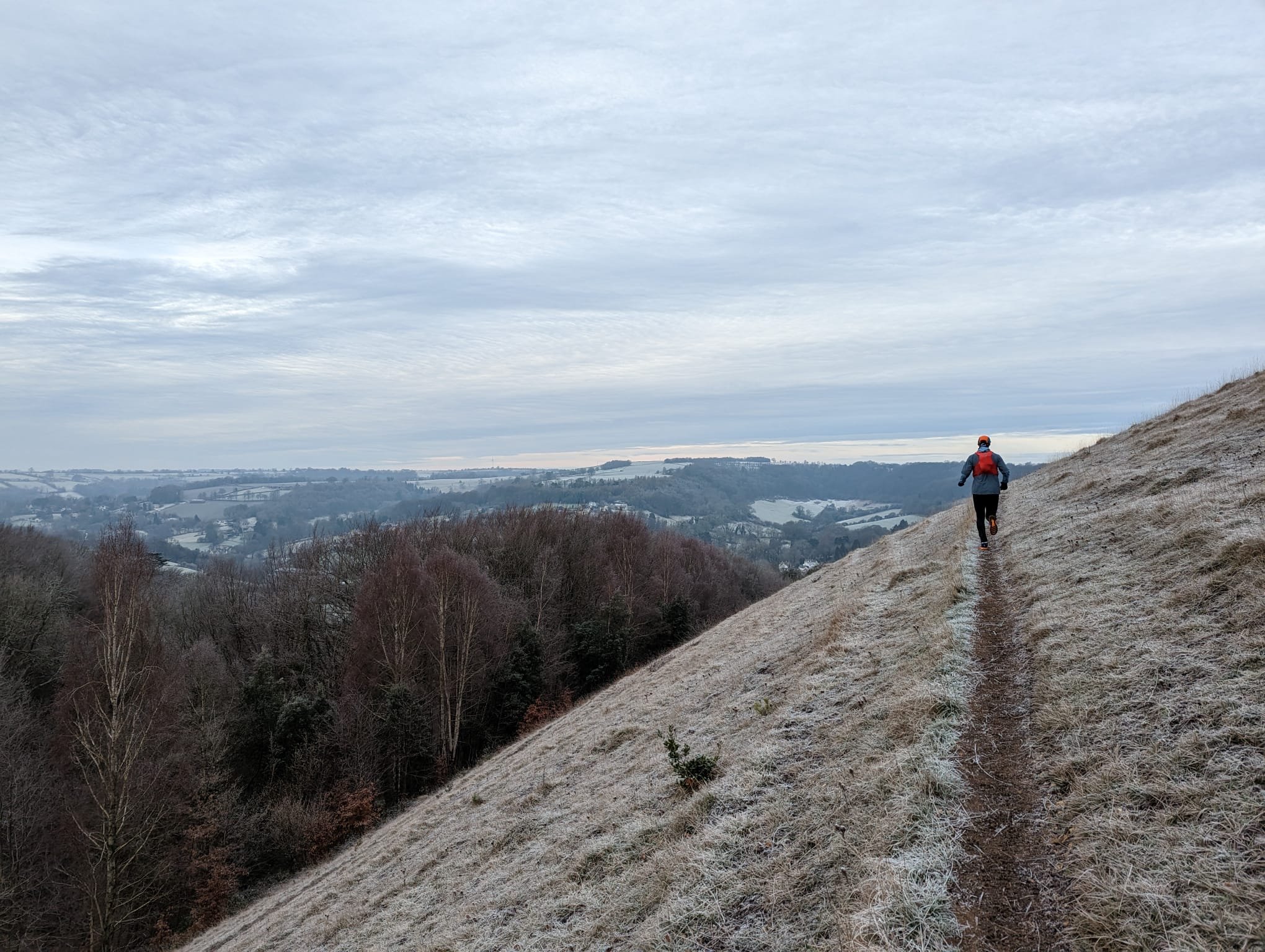Dealing with Navigation Errors: A Mountain Leader’s Approach to Getting Back on Track
As hill walkers, we’ve all been there: you’re trekking through the hills, feeling confident, and suddenly—nothing looks familiar. The path you thought was ahead of you isn’t there, or the hilltop that was meant to be just around the corner seems unreachable.
Navigating in the mountains is a skill, and sometimes, even the most experienced walkers can make mistakes. As with life, it’s not about avoiding errors altogether, but how you react when they happen.
In this blog post, I’ll share my expertise as a Mountain Leader on how to handle navigation errors confidently. Understanding common mistakes, learning how to correct them, and keeping calm are key to successfully getting back on track. So let’s dive into the most common navigation errors and how to overcome them.
If you haven’t already, you can read our post on navigation for beginners here.
Losing Track of Your Location
One of the most common navigation errors is simply losing track of where you are. Whether it’s a misinterpreted grid reference, an overlooked landmark, or just a lack of focus.
How to Correct It:
Stop and Stay Calm: The first step when you realize you’re off track is to stop and stay calm. Panicking will cloud your judgment and make it harder to think clearly.
Take a Bearing: If you have a map and compass, take a bearing from a nearby landmark that you can identify, such as a hilltop, a distinct feature, or a road. Compare it with your map to see if you can match the features.
Look for Recognizable Landmarks: Use your map to look for features that might be visible around you, like rivers, rock formations, or path junctions. Cross-reference them with your map to get a better sense of where you are.
Retrace Your Steps: If you have an idea of where you might have gone wrong, retracing your steps can be an effective way to get back to a known point and reorient yourself.
Key Tip: When in doubt, don’t rush. It’s better to take a few minutes to reassess your location than to keep moving and potentially get further off course.
Misreading Contours and Elevation
Contouring mistakes can be particularly tricky, especially when navigating on hilly terrain. Misjudging your elevation or the direction of a slope can easily lead you in the wrong direction.
How to Correct It:
Recheck Your Contour Lines: Look closely at the contour lines on your map. Make sure you understand whether the lines are showing an ascent or descent. When the lines are closely spaced, you’re climbing or descending steeply, while wider spacing suggests a gentler slope.
Use a Compass to Confirm Direction: If you’re unsure whether you’re heading uphill or downhill, use your compass to take a bearing and check that it matches the slope. Often, your compass will give you a clearer sense of which direction you should be heading.
Look for Elevation Landmarks: Pay attention to prominent peaks or valleys in your vicinity. If you’re on a ridge or near the top of a hill, that should match up with the contour information on your map.
Key Tip: If you feel like you’re in the wrong spot, stop and assess. Take a moment to confirm your position by comparing terrain features to the map, rather than just continuing.
Over-reliance on Technology
GPS devices and smartphone apps can be helpful, but relying solely on them can lead to mistakes if the signal is lost, the battery runs out, or the app malfunctions. It’s easy to forget that technology should complement—not replace—traditional map and compass skills.
How to Correct It:
Switch to Traditional Navigation: If your GPS device fails or becomes unreliable, fall back on your map and compass. These are far less likely to let you down in remote areas.
Use a Grid Reference: On your map, take a grid reference of your current location and compare it with the GPS output. This will help you see whether the GPS is showing the correct location.
Stay Familiar with Basic Techniques: Even if you use technology, always carry a backup map and compass and know how to use them. You can rely on your compass to take bearings, orient the map, and ensure you're on the right track.
Key Tip: Don’t ignore the basics. A GPS is only one tool in your navigation toolkit—map and compass skills are your safety net.
Getting Distracted by Weather or Fatigue
Weather conditions can change unexpectedly in the hills, reducing visibility or making it harder to concentrate. In addition, fatigue can cause lapses in judgment, making it easier to miss signs or markers that should be obvious.
How to Correct It:
Take Regular Breaks: Fatigue can cloud your decision-making. Schedule regular breaks to rest, refuel, and reset your mind. If you're feeling overly tired or frustrated, it’s okay to pause and reassess.
Check Visibility: If you’re caught in poor visibility, use landmarks and features you can still see, like the direction of the wind, the shape of the land, or the sound of a stream. Trust these senses to help you navigate.
Adapt Your Plan: In inclement weather, it may be necessary to adjust your route. If visibility is poor or conditions are worsening, you may need to retreat to a known safe area and wait for the weather to clear.
Key Tip: Keep a cool head and be prepared to alter your plans if the conditions are making navigation too difficult. It’s better to adjust than to press on blindly.
Failing to Regularly Check Your Position
When you're on a long hike, it’s easy to get caught up in the journey and forget to regularly check that you're still on course. Without regular checks, you might drift off track without noticing until it’s too late.
How to Correct It:
Check Your Map Every 15-20 Minutes: Make a habit of regularly stopping to check your map and compass. Even if you're confident, this simple practice ensures you stay on track and can spot any potential errors early.
Use Landmarks as Regular Checkpoints: Identify key landmarks on your route that you can use as checkpoints. This helps to keep you grounded and reassured that you’re moving in the right direction.
Adjust as You Go: If you notice something is off—like a feature that’s not where you expected it to be—take a moment to adjust your route. Correcting small errors early can prevent bigger problems down the line.
Key Tip: Consistency is key. A small, regular check is much easier to fix than a large problem that’s developed over time.
Incorrectly Using Grid References or Bearings
Taking a grid reference or bearing incorrectly is a common mistake that can lead to frustration and confusion. Even minor errors can send you far off track.
How to Correct It:
Double-Check Your Grid Reference: When reading a grid reference, ensure you’re reading it accurately, starting with the easting (the first number) and then the northing (the second number). Misreading a reference can mean you’re on the wrong part of the map entirely.
Use Your Compass to Verify Bearings: When taking a bearing, make sure the compass is flat and level, and that the needle is freely pointing to magnetic north. Cross-check the bearing with the map to ensure they align.
Practice Makes Perfect: Regular practice is essential to getting grid references and bearings right. Spend time practicing navigation in a safe, controlled environment before taking on more challenging routes.
Key Tip: If you’re unsure, it’s always better to slow down and double-check rather than proceed with potentially inaccurate information.
Conclusion: Confidence Through Practice
Navigation errors are a normal part of hill walking, but they don’t have to ruin your experience. By staying calm, rechecking your position, and using a methodical approach to problem-solving, you can overcome errors and regain your confidence on the hills. The more you practice your navigation skills, the easier it will be to spot and correct mistakes quickly.
Remember: it's not about being perfect. It’s about developing the confidence and skills to deal with errors when they arise, knowing that every mistake is an opportunity to learn and grow. With patience and persistence, you’ll build the skills you need to navigate with confidence and enjoy your time in the mountains safely.







